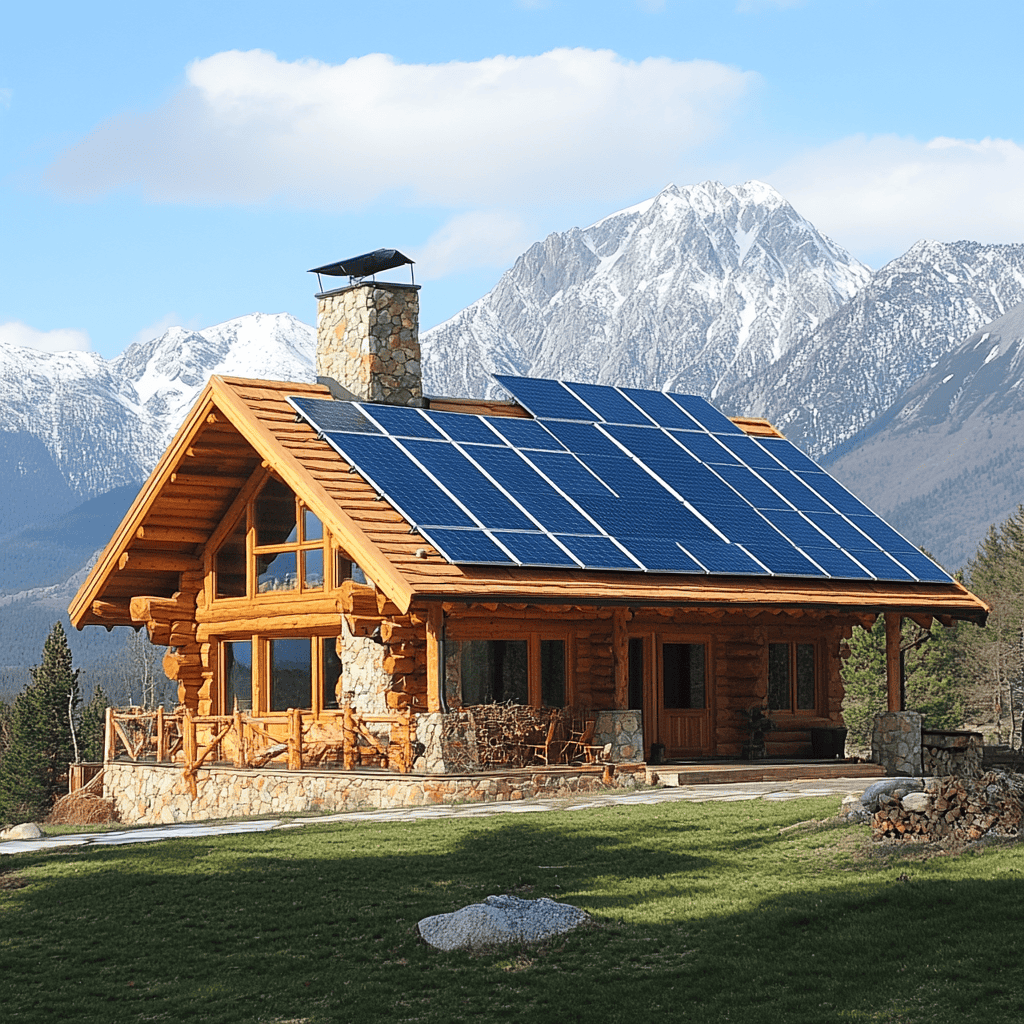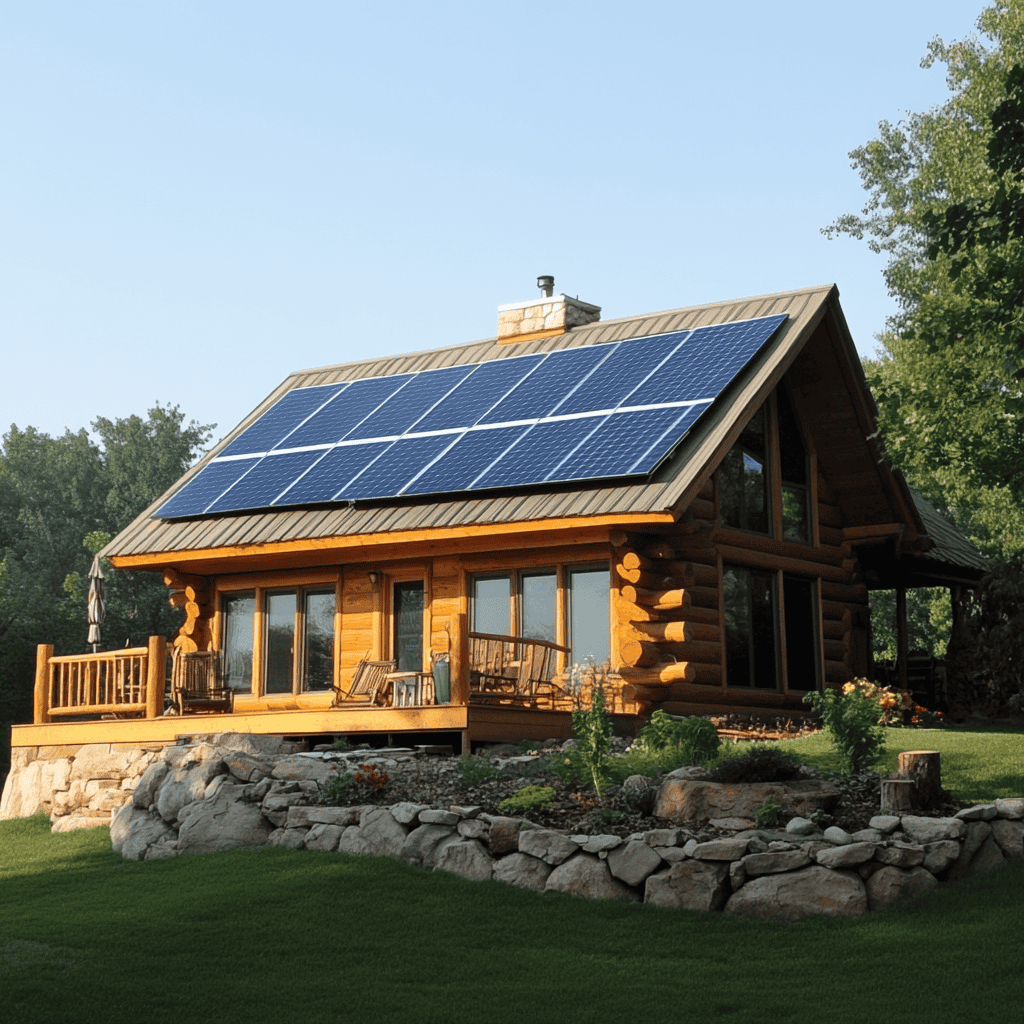Log cabins provide an ideal opportunity to harness solar energy. By finding creative ways to incorporate solar panels, residents of log cabins can reap the rewards of clean, green energy while simultaneously lowering their carbon footprint.
Installing mains electricity can be time consuming and costly; adding solar power systems to garden log cabins is relatively simple and inexpensive. Here are some helpful tips for how you can do it yourself.
Roof
One of the most popular upgrades for log cabins is installing a solar power system. These systems provide electricity for lighting, electric motors and pumps, heating systems and more, reducing your reliance on traditional energy sources such as utilities. Furthermore, many log cabins are situated in rural locations where accessing traditional utility services may be costly or difficult; thanks to advances in solar panel technology they can now enjoy all the advantages of solar energy without compromising natural aesthetics or tranquility.
Add solar panels to a log cabin requires some careful thought and planning, but there are plenty of ways they can blend seamlessly into its design. Some options include rail-free mounting systems that hide hardware. Others involve changing out roofing materials that support more weight while decreasing their visual impact on exterior design.
When planning a new log home or adding solar power to an existing one, it is crucial that you consult with an expert in order to select the appropriate PV system for your needs. A knowledgeable contractor or architect can assess how the site interacts with sun’s path throughout the year; visiting at different times of day allows the contractor to monitor this phenomenon more closely before offering recommendations for optimal solar strategies.
Once you’ve installed solar panels in your home, there are various ways you can ensure they blend in seamlessly with the surrounding landscaping. Install them beneath eaves to avoid overhanging branches from blocking sunlight; or use a shaded roof canopy to keep panels cool and protected from weather elements.
Install a solar water heater, which uses the sun’s energy to provide heat for heating your home’s water, further reducing fossil fuel dependence and utility expenses. Furthermore, insulate your roof to prevent heat loss during winter and gain during summer.
Utilizing cutting-edge technologies and stylish accessories, incorporating solar panels into a log cabin design has never been simpler – creating an eco-friendly home that is both aesthetically pleasing and energy efficient.
Walls
Log homes naturally boast excellent energy efficiency due to their thermal mass, but there’s much you can do to further make them eco-friendly. Installing solar panels and making other environmentally conscious upgrades are some ways that you can lower your carbon footprint and save on utility costs.
Add a PV system to your garden building to power appliances like televisions, heaters and refrigerators cost-effectively and without worrying about losing work if the mains electricity goes out – an especially valuable consideration if using your log cabin as an office.
PV systems use wires that convert sunlight to electricity. For maximum efficiency, it should be installed in a southern-facing location with minimal shade from trees or structures and an unobstructed roof surface in your cabin.
For optimal placement of your solar system, speak with an expert early in the construction process. They will assess its potential and help identify an ideal spot for PV racking, conduits and an inverter based on local laws and regulations as well as safety concerns regarding components like battery banks that contain acid that emit toxic fumes – make sure any safety requirements are complied with when setting up such components as battery banks!
Consider installing a solar skirt onto your racking, which conceals gaps or cables beneath the system and gives your roof a finished appearance while helping prevent leaves and debris from collecting underneath it. Also, using low-VOC paints throughout your log cabin is sure to improve indoor air quality.
One way to reduce energy usage is by collecting rainwater for non-potable use. A well-designed rainwater collection system can drastically cut back your dependence on municipal supplies, while greywater recycling systems reusing wastewater from sinks, showers, and laundry for irrigation can further decrease consumption.
Floors
Add solar power to your log cabin as an effective way of increasing its efficiency, powering lights, electric motors, pumps, heating and tools as well as acting as a backup source in case of power cuts. Garden log cabins especially benefit from having solar installed without running cables across their garden – this feature is especially handy if using it as an office space where a power failure could cost hours of work!
Solar power provides a renewable and environmentally-friendly source of energy that’s cost-effective; you only pay for what you use! A solar energy system also adds value to your log home as buyers will appreciate your commitment to green building practices and will likely appreciate the addition of green technology as part of its construction techniques.
There are various methods of incorporating solar energy into a log cabin, from passive to active systems that use roof-mounted systems to absorb sun-heated water and convert it to electricity. You can also incorporate green building principles by selecting energy efficient windows with low U-values and high SHGC values; shading sunny sides is another great way to utilize the sun’s energy.
Your choice of solar system size and type depends on both your electricity usage and amount of sunlight your log cabin receives, as well as whether or not some of it should go back into the grid or stored batteries. For off-grid systems, using a battery charge controller to manage charging rates and prevent overcharging can help ensure smooth performance; while installing a critter guard at the base can protect from birds or small animals nesting underneath your panels.
Doors
Solar power can help reduce your dependence on traditional sources of energy like electricity and fossil fuels. Solar panels can power appliances, lights, motors, pumps, heaters, tools and much more – from appliances and lights to motors, pumps, heaters and tools. You can send back any excess energy back into the grid or store it away as battery energy. Determining exactly when and how much power to run requires speaking to a Katahdin representative during design; make sure you discuss this beforehand to avoid surprises in operation costs!
Put energy-efficiency upgrades into your cabin to reduce its environmental impact and utility bills, and lower utility expenses. Install a water conservation system to reduce municipal water supplies while saving money; or harvest rainwater for gardening and non-potable uses instead.
Upgrading to appliances with high energy-efficiency ratings, such as those labeled ENERGY STAR will save money and keep your cabin comfortable at the same time. They have been tested and proven to reduce energy consumption by 20% or more; saving both money and keeping you cozy inside!
Integrate solar energy into the doors and windows of your log cabin home to convert them from energy consumers into producers, while making your log cabin more attractive without obstructing sunlight access or compromising style. This installation can make solar power part of its charm!
Solar window and door panels are an excellent addition to log homes as they help lower summer heat gain while cutting down energy consumption with traditional energy systems. Furthermore, these smaller solar window/door panels may be less costly and more visually appealing than larger mounted panels.
Before ordering solar door and window panels, discuss all of the available options with your builder. Some offer bypass diodes for maximum production even when shaded by trees, clouds or other obstructions, while others feature sleeker frames without HOA approval requirements.
Other ways you can make your log cabin more eco-friendly include installing a solar water heater that uses energy from the sun to heat your home’s water and reduce energy use, investing in good insulation to prevent heat loss in winter and gain during summer, using sustainable insulation options such as cellulose. Finally, using reclaimed lumber elements could also reduce timber needs.

